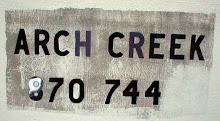
Finished reading this article tonight in The New Yorker. It begins:
Nine hundred years ago, at a site on a high plateau north of the Limpopo River called Great Zimbabwe, Shona kings built stone palaces where they lived in splendid isolation from their subjects, with absolute authority over their means to sustain life—cattle herds, land, and the gold that came out of the earth. In the nineteen-sixties, members of a liberation movement in what was then Rhodesia, among them Robert Mugabe, adopted Great Zimbabwe’s name to refer to the notional state they were fighting for. Today, Mugabe can be said to be the owner of the riches that remain in the nation of Zimbabwe.
(I'd never heard about Great Zimbabwe and wanted to see what it looked like. See here, from the New York Metropolitan Museum--with a mistake in the copy, no less.)
Anyway, Mugabe has run the country into the ground and caused untold suffering, largely by confiscating and then destroying the farms once owned and run by the white colonizers. The same could now happen to the foreign-operated mines. (Maybe they should learn how to run these businesses before confiscating them!)
(Click on the map to enlarge. Zimbabwe is down at the bottom, in purple.)[T]he inflation rate in Zimbabwe had officially reached eleven million per cent, the highest in the world; analysts later reckoned it to have been two hundred and thirty million per cent. Eighty per cent of Zimbabweans were out of work. Chronic malnutrition was prevalent, and starvation was spreading in the countryside. Close to two million Zimbabweans depended for survival on food handouts from international aid agencies. Twenty per cent of the population was infected with H.I.V./AIDS. Zimbabwe’s life expectancy is forty-four years for men, forty-three for women. . . .
In the weeks after the election, as the political stalemate persisted, the value of Zimbabwe’s currency plummeted. Before crossing the border from South Africa, I had exchanged a hundred American dollars for three trillion five hundred billion Zimbabwean—thirty-five billion to a dollar. Most of the cash was newly minted five-, twenty-five-, and fifty-billion-dollar notes, with pictures of giraffes and grain silos. A few days later, the going rate was a hundred billion to one. Food prices tripled overnight, and many salaries were made virtually worthless. Cash was becoming nearly impossible to obtain; banks were allowing customers to withdraw the equivalent of only one U.S. dollar per day. The effect was a state of existential madness. Prices bordered on the fantastic, and ordinary people had to grapple with calculations in the trillions for the most prosaic transactions. One day, I wandered into a supermarket to buy some water. The price for a half-litre bottle was $1,900,000,000,000 Zimbabwean, or nineteen U.S. dollars. On a nearby shelf, I found a bottle of Johnnie Walker Black for $83,000,000,000,000. . . .
[The American ambassador] cited the announcement by Zimbabwe’s central-bank governor, that morning, of a new currency that had ten fewer zeros. The “new” banknotes were, in fact, old ones that had been stockpiled. [The ambassador] believed that the measure had come about because a German company had halted its shipments of banknote paper after calls for it to be placed on the E.U.’s sanctions list—the country, quite simply, was running out of paper on which to print its money. . . .

No comments:
Post a Comment